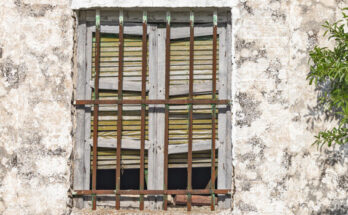Nature is constantly reminding us of its fierce beauty, with masterful displays of intricate artistry that can’t be replicated by humans.
Its unique works of art are also meant to be untouched, otherwise destroying the delicate process of nature’s creations…
Contrary to what its name suggests, the Mourning Cloak butterfly isn’t mourning, instead celebrating that it’s one of the longest living butterfly species in North America.
These winged wonders – typically living up to one year – earned its name for its velvety dark wings, reminiscent of a traditional cloak worn by people in mourning.
Adding a pop of color is a row of iridescent blue spots on the inner edge of the wing, which is surrounded by a bright yellow ribbon around the outer edge.
When their wings are folded, they look like a charred piece of bark with a dull white band that appears on the underside of their wings.
They flying insects are members of the brush-footed butterflies (Nymphalidae), which have a greatly reduced first pair of legs that are often hairy and brush-like, hence the name.
Unlike their relatives, Mourning Cloaks don’t have a pallet for the nectar of flowers. Instead, they prefer dining on sap, fruit or the sugary residue left behind by aphids.
Biochemical superpower
These all-season butterflies overwinter as adults in cozy shelters like tree hollows, sheds, or other protected places.
Possessing a biochemical superpower – a natural anti-freeze composed mainly of glycerol, a type of sugar – the butterflies can withstand temperatures as low as 80 degrees below zero.
And, in extreme heat, they go dormant until the fall when they again emerge to feed, packing on the fat to survive the upcoming winter.
Cluster of eggs
In the early spring, even before flowers have bloomed, this butterfly is often one of the first you will see.
The busy creatures are out to mate, afterwards using trees or leaves as a canvas to create a spectacular design of berry-like eggs.
And when you see Mourning Cloak butterfly eggs, it’s a sight you’ll never forget.
The cluster of tiny geometric shapes are intricate in design and shortly before they hatch, the eggs turn from a golden yellow to black, making the bunch look like an otherworldly deposit.
Caterpillars come out to play
Mourning Cloak caterpillars have a unique appearance compared to many other butterfly species. They are generally black or dark brown with tiny spines covering their bodies. They often have small white or yellow spots along their sides, and some may have reddish-orange markings near their head and tail ends.
Voracious feeders, these caterpillars consume large quantities of foliage as they grow oftentimes causing noticeable defoliation of host plants, like shrubs, poplar, elm, or willows.
The spine-covered caterpillars may look delicate, but they won’t go down without a fight.
When they feel threatened, the young caterpillars – that live communally in silken webs – twitch in unison, their spiky bodies shuddering as a mass, making them less appealing to predators.
The tiny spines are not harmful to humans but can cause skin irritation or a mild sting if handled. While reactions to Mourning Cloak caterpillar stings are typically mild, it’s always a good idea to avoid handling caterpillars with bare hands, especially if you have sensitive skin or a history of allergic reactions.
Once the caterpillar is ready to begin its next phase, it spins a cozy chrysalis, where it then transforms into a beautiful Mourning Cloak butterfly.


